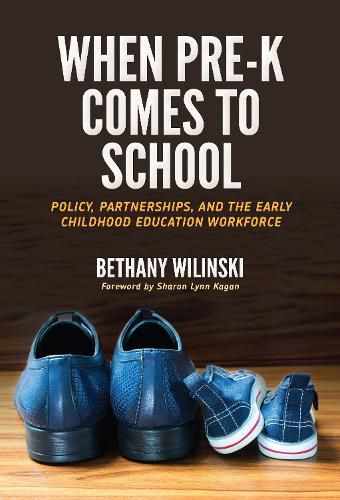Readings Newsletter
Become a Readings Member to make your shopping experience even easier.
Sign in or sign up for free!
You’re not far away from qualifying for FREE standard shipping within Australia
You’ve qualified for FREE standard shipping within Australia
The cart is loading…






When Pre-K Comes to School traces what happens-for institutions and teachers-when a school district and community ECE centers partner to provide public pre-K. The author examines policy implementation across diverse sites-a private part-day preschool, a corporate childcare center, and a public elementary school. She demonstrates how pre-K partnerships create opportunities but also considerable constraints for the institutions and teachers involved. Though teachers are required to comply with the same policy mandates, their compensation and access to resources varies greatly. This book calls for policies and practices that will work better for teachers, which, in turn, will work better for children. The book’s unique, insider perspective on how policy is actually enacted in schools provides important insight into what communities and policymakers should consider when creating pre-K policies. Book Features: an in-depth examination of teachers’ work across settings and situated within a changing, broader policy context; evidence that public pre-K partnerships have serious and sometimes negative consequences for teachers and institutions; a focus on the experience of teachers who are critical to the success of pre-K; interviews with pre-K teachers and state policymakers; recommendations for pre-K policy that is more beneficial to teachers, institutions, and families.
$9.00 standard shipping within Australia
FREE standard shipping within Australia for orders over $100.00
Express & International shipping calculated at checkout
When Pre-K Comes to School traces what happens-for institutions and teachers-when a school district and community ECE centers partner to provide public pre-K. The author examines policy implementation across diverse sites-a private part-day preschool, a corporate childcare center, and a public elementary school. She demonstrates how pre-K partnerships create opportunities but also considerable constraints for the institutions and teachers involved. Though teachers are required to comply with the same policy mandates, their compensation and access to resources varies greatly. This book calls for policies and practices that will work better for teachers, which, in turn, will work better for children. The book’s unique, insider perspective on how policy is actually enacted in schools provides important insight into what communities and policymakers should consider when creating pre-K policies. Book Features: an in-depth examination of teachers’ work across settings and situated within a changing, broader policy context; evidence that public pre-K partnerships have serious and sometimes negative consequences for teachers and institutions; a focus on the experience of teachers who are critical to the success of pre-K; interviews with pre-K teachers and state policymakers; recommendations for pre-K policy that is more beneficial to teachers, institutions, and families.